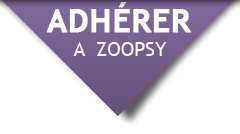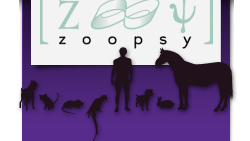| |
Association of pruritus with anxiety or aggression in dogs
Mary P. Klinck, DVM; Frances S. Shofer, PhD; Ilana R. Reisner, DVM, PhD, DACVB
Revue : Journal of the American Veterinary Medical Association
Department of Clinical Studies-Philadelphia, School of Veterinary Medicine, University of Pennsylvania, Philadelphia, PA 19104-1060. (Klinck, Shofer, Reisner)
Objective - To evaluate the association between pruritus and anxiety-related and aggressive behaviors in dogs.
Design - Cross-sectional survey.
Animals - 238 dogs between 1 and 8 years old.
Procedures-Information including a score for general degree of pruritus (visual analogue scale from 0 to 10) and frequency of anxiety-related and aggressive behaviors was collected via a survey distributed to clients at 3 privately owned practices.
Results-Median score for pruritus was 2.4. Dogs were assigned to 2 groups on the basis of pruritus score (nonpruritic [0 to 2.4] and pruritic [2.5 to 10]). There was no significant difference between pruritic and nonpruritic dogs with regard to aggression or with regard to reactivity to being alone; to thunderstorms or noises; or to unfamiliar people, animals, or objects. Post hoc analysis revealed significantly more reactivity to thunderstorms or noises in dogs treated with glucocorticoids (18/37 [49%]) than in those not administered glucocorticoids (57/197 [29%]).
Conclusions and Clinical Relevance-An association was not detected between pruritus and aggressive, anxious, or fearful behavior in dogs. There was greater reactivity to thunderstorms or noises in glucocorticoid-treated dogs. These findings do not preclude the possibility of a relationship between certain dermatoses or pruritic conditions and behavior. However, a concurrent behavioral abnormality cannot be assumed to result from a dermatosis and be expected to resolve with treatment of only the skin disease. Dogs with behavioral disorders and pruritic disease require primary treatment of both conditions. Additional studies to examine the effect of disease and glucocorticoids on canine behavior are warranted.

JAVMA October 1, 2008, Vol. 233, No. 7, Pages 1105-1111
|
|


